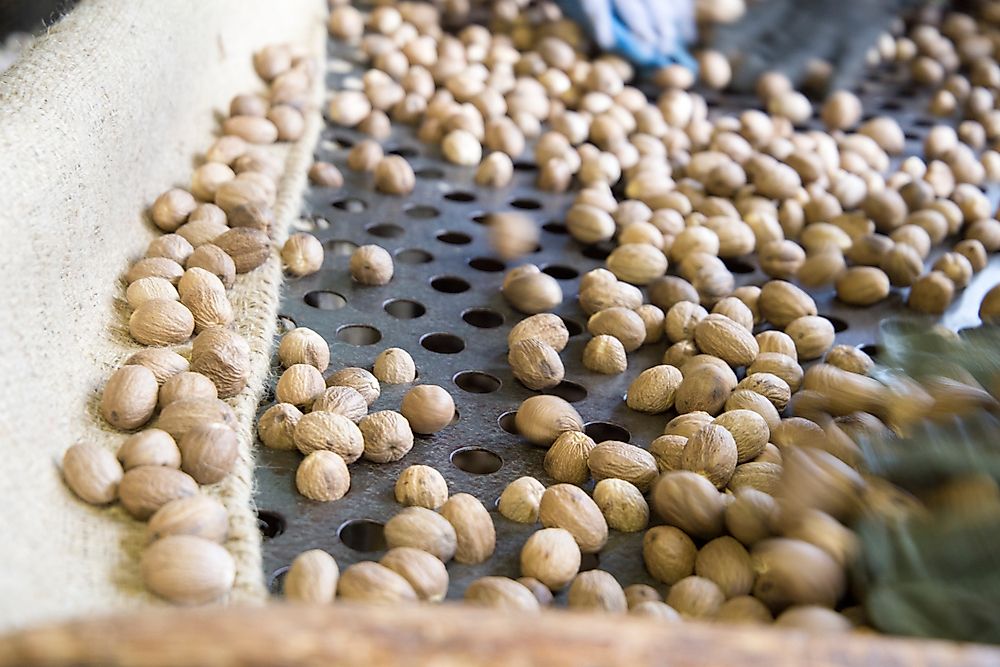What Are The Biggest Industries In Grenada?

Grenada is an independent country located in the West Indies. The country is made up of the main island of Grenada and other six small islands found in the northern part of the main Island. Other islands lying close to Grenada include Trinidad and Tobago, Saint Vincent, and the Grenadines. Venezuela lies to the north-east part of Grenada, and the country spans an area of 134.6 square miles, and its population is about 107,317 people according to the 2016 estimates. The capital city of Grenada is St George, which is also the largest city on the island.
In 2018, Grenada had a GDP based on purchasing power parity of $1.7 billion, ranking the country as the 119th highest. In the same year, Grenada had a nominal GDP per capita of $15,749, and GDP grew by 6.4% in 2015 and 3.7% in 2016, while in 2017 the growth was 4.5% and 3.3% in 2018.
Agriculture
Granada is famous worldwide for its wide array of spices and the most common ones being mace and nutmeg, and the country is the second leading in the world in the production of nutmeg after Indonesia which supplies approximately 20% of the worlds share, and nutmeg has been depicted on the flag of Grenada. Other important spices produced in Grenada include ginger, cloves, and cinnamon. The island nation of Grenada is also famous in the production of oranges, citrus peels, and coffee.
Tourism
Tourism in Grenada plays a significant role in the country's economy, and the southwestern part of St George is particularly popular with water-sport tourism. Ecotourism is growing in popularity in Grenada, and several eco-friendly guest houses have been constructed along with the parishes of St David and St John. Tourism in the country has grown dramatically, particularly following the building of a huge cruise ships esplanade and pier. Between 2007 and 2008 at least four cruise ships were leaving every day at St George during the cruise ship season. Most tourism activities are concentrated in the southwestern part of the island, particularly around Grand Anse, St George, Point Salines, and Lance Aux Epines.
Quarrying
Granada does not have commercial mining of minerals, but quarrying is the main activity, and it is carried out particularly around telescope in the parish of Saint Andrews, which is an agricultural hub. High-quality, durable Rock, and basalt, which are used particularly for high strength concrete and asphalt road surfaces are some of the raw materials extracted. The operations are owned by the state-owned Gravel, Concrete and Emulsion Corporation together with other small gravel mining at Mon Rush near St George. For a long time, sand has been extracted particularly from the beaches in the country, and it has adversely affected the environment, and the activity has so far been banned. However, illegal harvesting of sand is still widespread, which is carried out on a small scale, particularly for construction purposes.
Manufacturing
According to the World Bank report of 212, the manufacturing industry in Grenada as of 2010 accounted for about 4.5% of the country's GDP. The industry has grown significantly, particularly at the turn of the 21st century because the government encouraged Industries through tax exemptions, incentives, and other facilities. Granada has been ranked by the World Bank at position 107 out of 185 countries for ease of doing business. Manufacturing in Grenada is not sophisticated but encompasses sectors such as construction, jewelry manufacture, and woodwork, among others, which are particularly run on a small scale.
Challenges Facing Grenada
One of the greatest challenges facing the island nation of Grenada is poverty, which is worse in rural areas. The country has faced the challenge of poverty for a long time, and it has been a monumental challenge because the nation is small in size and is vulnerable to natural disasters and it is compounded with the lack of skilled workforce particularly in the rural areas. The World Bank pointed out that about 32% of the country's population is regarded as poor, and about 13% are regarded as exceedingly poor. Poverty is most widespread in the rural areas who engage mainly in farming activities for livelihood, and especially for the elderly whose, the average age of farmers in Grenada is 48 for men and 54 for women.











